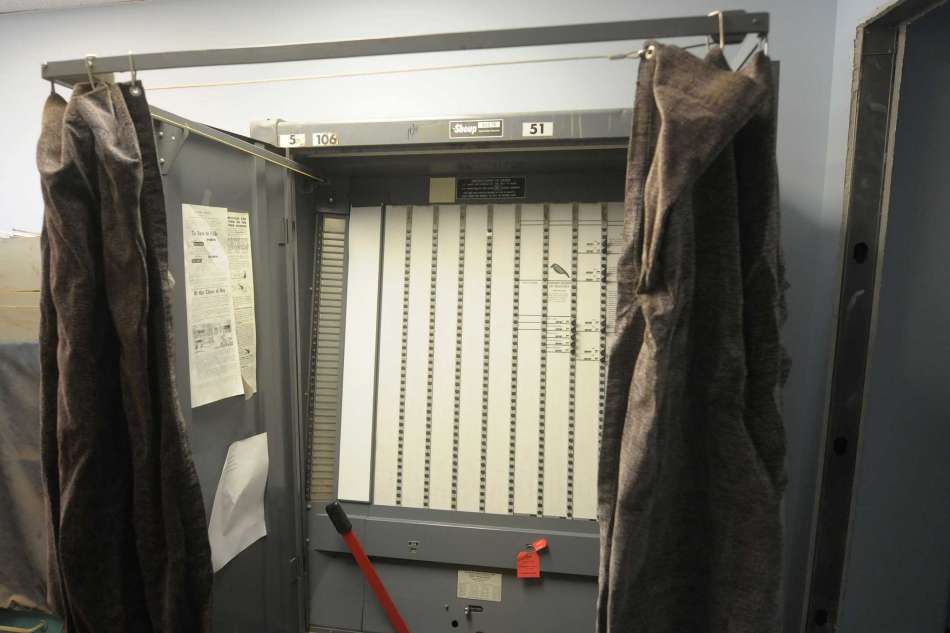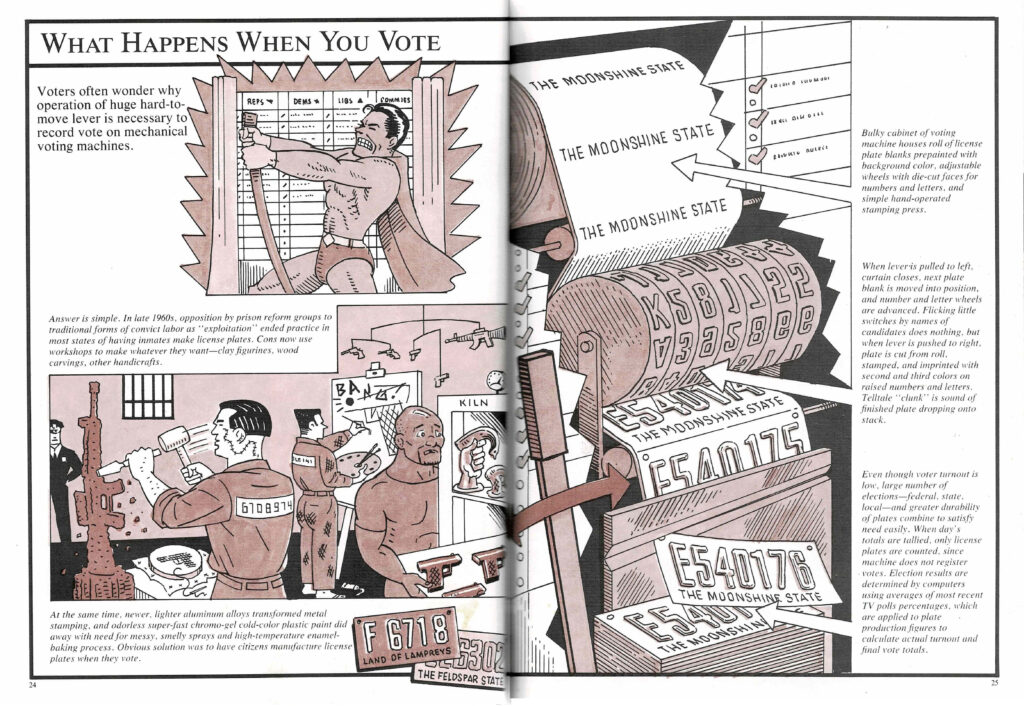Over the years I have written many articles about direct-recording electronic (DRE) voting machines, precinct-count optical-scan (PCOS) voting machines, ballot-marking devices (BMDs), and other 21st-century voting technology. But I haven’t written much about 20th-century lever machines; these machines were banned by the U.S. Congress in the Help America Vote Act and have not been used since 2012.

Recently, upon a midnight dreary, while I pondered, weak and weary, over many a quaint and curious volume of forgotten technology, I came across the excellent 1993 book, The Way Things Really Work, by Henry Beard and Rod Barrett. This book has a clear explanation of the inner workings of mechanical lever voting machines, as follows.

I think it should now be clear why Congress banned this technology.
The book also has explanations of “How candy machines eat your quarters,” “How airlines lose your luggage,” “How elevators know to close their doors when you come running,” and so on.

LOL, Thanks for April Fool laugh… Now, how DID the mostly-beloved lever machines work and why were they replaced by, in most states, touchscreens? Were there any good reasons? Was it pressure from people with disabilities who had difficulty reading the small print or pulling the levers? Or was it pressure from vendors who had sold riggable voting machines to countries where the CIA and State Department wanted control of election outcomes? What about candidates in local races who learned they had got no votes in their own district because someone had glued the levers in the back of the machine? (I know one such former candidate. Hey, at least that hack was caught, though not the hacker.)